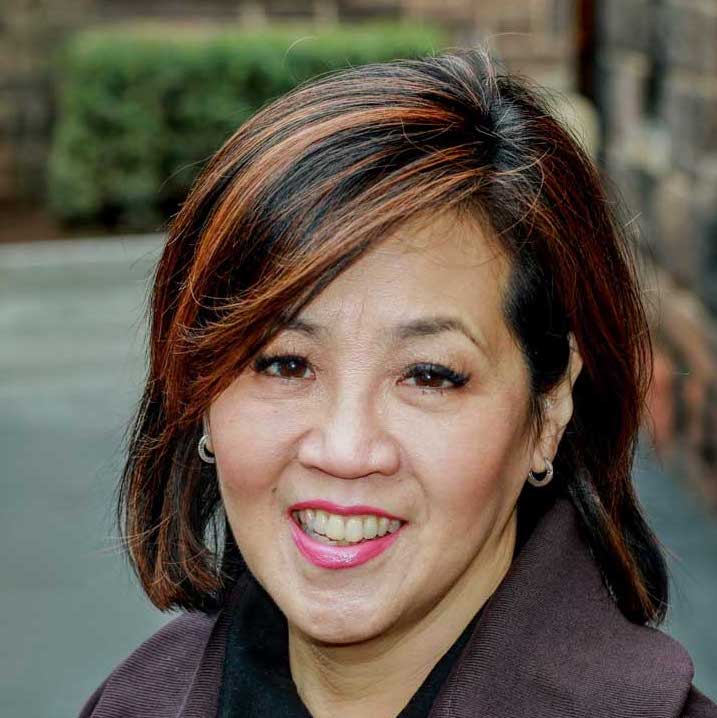The message scrawled into a door of the Capitol building made clear the mob wasn’t just aiming to overturn the decision of America’s voters. The most violent rioters had another target:
“MURDER THE MEDIA.”
via @mattmiller757, they tagged “MURDER THE MEDIA” on a Capitol doorway. pic.twitter.com/XKLQkl3BUh
— Brian Beutler (@brianbeutler) January 7, 2021
The Jan. 6 riot heightened awareness in newsrooms across the country about the need for revamped safety plans — especially for field crews. Many news organizations are reaching out with questions. For answers, we turned to journalists who faced the Capitol mob.
Shomari Stone is a veteran of large and violently angry protests. Over 20 years, he’s reported from major protests in Miami and Seattle. For the last decade, he’s been a leading local reporter for WRC/NBC Channel 4 in Washington. That put him on the front line in the takeover at the Capitol, and also gave him an up-close view of the Black Lives Matter demonstrations. His view: There’s no comparison.
“Never have I seen just such hatred towards the media” as he did during the Capitol riot, he said.
What does it mean to journalism and democracy? He spoke to Poynter just days after the assault.
Stone says his employer, WRC/NBC Channel 4, offers great support to its on- and off-air journalists, giving them security and any protective equipment they might need. But Stone didn’t wear gear at the Capitol riot, hoping to better “blend in” with the crowd and not agitate rioters further.
“My experience, my truth. You’re making yourself a target,” Stone said. “I did not have anything on me that said ‘NBC.’ I did not have on my NBC jacket. I did not dress up as though I’m the stereotypical reporter in nice clothes. I essentially had on a blue jacket, which would indicate that I’m not part of the antifa group. And secondly, I was able to capture a lot on my HD iPhone.”
[the_ad id=”667826″]
Many of Stone’s colleagues — professional cameramen — faced different problems.
Ralf Oberti has worked with major U.S. and international television networks in D.C. for 20 years. As a freelancer, though, he doesn’t always have the same protections as staff videographers.
Oberti was at the “swamp site,” a common area for video crews on the Senate side of the Capitol building. He was right next to the Associated Press team as the mob moved in to destroy their equipment and try to force them to leave.
Oberti and others lost much of their equipment, but he was able to rescue his camera. And he went back to work that day.
“After all, we’re like firemen, and you cannot be afraid of the flames,” he said. “When everybody’s escaping the fire, we the media or the cameramen and the reporters, we go to the fire because that’s our job. You need to show what’s going on and report really what’s going on.”
The most important element of AP photographer Julio Cortez’s preparation for the out-of-control scene wasn’t protective gear. It was his partner, fellow AP photographer John Minchillo. In an instant, someone in the mob shouted that Minchillo was “antifa” — making him the target of others who dragged him down eight marble steps outside the Capitol and forced him over a railing. Cortez didn’t turn away — he moved in to pull his partner to safety.
“This is why you should always work with, you know, a buddy who’s going to protect you and look out for you and you can trust,” he said.
Cortez and Minchillo made it out relatively unscathed, but shaken. He still doesn’t know why the crowd targeted Minchillo and not him (both were wearing press gear and carrying their professional cameras).
Sometimes, it doesn’t matter which news organization you represent. Al Jazeera English correspondent John Hendren has covered wars and conflicts in Iraq, Afghanistan, Ukraine, Libya, Gaza — and tense situations in the U.S. But the scene at the Capitol was beyond his imagination.
Hendren and the other journalists shared their strategies: Blend into the background, stand to the side of the crowd, try to remain unobtrusive. Several said using their mobile devices for video helped them stay out of trouble.
[the_ad id=”667872″]
But it can be difficult to avoid hostile glares. At other protests, Cortez says he has felt the pressure of being a brown man in a predominantly white crowd. His solution to any hostility? “A lot of times you know people kind of get aggressive … and I just kind of, you know, try to be as nice as possible.”
That didn’t always work.
News managers face tough decisions — including when to yank their teams out of a volatile situation. Especially when they don’t want to leave. In Washington, D.C., WRC/NBC4 news director Mike Goldrick said it’s an on-going conversation in his newsroom.
Goldrick acknowledged that protective equipment and professional security are expensive — a big hit to newsrooms already struggling under the burden of COVID-19 costs — and not every newsroom can afford it. For journalists who can’t afford the best protection, stick with a partner, have an exit strategy and stay to the side where that’s possible.
And as reporter Shomari Stone said, “When worst comes to worst, if you are attacked by a crowd, be prepared to give up whatever you have and apologize to your bosses later.”
[the_ad id=”667878″]







